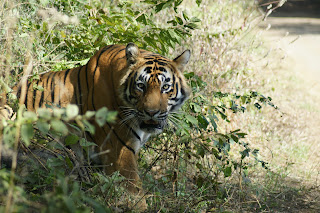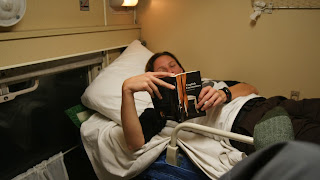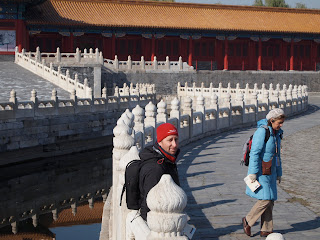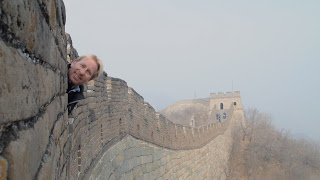After a quick stop-over in Delhi enjoying the luxury of the Imperial Hotel, we were driven to Jaipur via Amber.
 Amber has an magnificent pink fort resting on a rocky mountain side where the Maharaja's of the 1500 used as a palace. It saw three generations of Maharaja's each extending the fort by building a more grander palace next to their predecessors. It offered an amazing insight to how the Maharaja's lived. They had a bedroom for the winter and summer months. His winter bedroom walls and ceiling is covered in tiny mirrors, so the candles heat would reflect around the room, therefore warming the whole room.
Amber has an magnificent pink fort resting on a rocky mountain side where the Maharaja's of the 1500 used as a palace. It saw three generations of Maharaja's each extending the fort by building a more grander palace next to their predecessors. It offered an amazing insight to how the Maharaja's lived. They had a bedroom for the winter and summer months. His winter bedroom walls and ceiling is covered in tiny mirrors, so the candles heat would reflect around the room, therefore warming the whole room.What we really found fascinating was the Maharaja's sex life. Maharaja Man Singh had 12 wives with many more concubines. Apparently, everyday Man Singh had to perform 12 acts of Karma Sutra. The first position (missionary) was always with his first wife, the Queen and always in the same room. From there Man Singh would move from room to room performing the sequence of Karma Sutra positions with his 11 other wives. If at any stage he forgot what act of Karma Sutra he was meant to be engaging in there was a painting above the entrance of the room to remind him!

In 1693, the last Maharaja of Amber mapped out Jaipur to replace Amber as the capital of Rajasthan. Jaipur's fort and palace is affectionately called the Pink City. Pink is associated with hospitality, so when the Prince of Wales visited in 1876, the old city was painted pink in his honor.
Jaipur is also know for it's great shopping, however, Nick strategically filled the day with sightseeing so I was unable to do some 'window shopping'.
 As we never got to see a tiger in Nepal, we did a slight tiki tour to Ranthambore National Park. Which was Nick's first surprise. The real surprise was the hotel. Aman-i-khas' is made up of 10 luxury tents each having it's own Batman! Much to my disappointment batman is another term for butler. How cool would have it been to be served by Batman? It was pure luxury (and the only way I was going to get Nick into a tent!). We returned from dinner one night to find our tent completely covered in rose petals and candles. "Your going to get lucky" was Nicky Boy's response.
As we never got to see a tiger in Nepal, we did a slight tiki tour to Ranthambore National Park. Which was Nick's first surprise. The real surprise was the hotel. Aman-i-khas' is made up of 10 luxury tents each having it's own Batman! Much to my disappointment batman is another term for butler. How cool would have it been to be served by Batman? It was pure luxury (and the only way I was going to get Nick into a tent!). We returned from dinner one night to find our tent completely covered in rose petals and candles. "Your going to get lucky" was Nicky Boy's response.The following night we returned to this:
Looks like I was going to get lucky again! We did find the rose garden the following morning void of any roses.
 To make the whole experience even more memorable was finally spotting a tiger. We were on our second drive heading back towards the hotel when we came across T24. A male tiger marking out his territory along the road. Tigers are much bigger in real life than TV!! Like Nepal the guides equipped themselves with a big stick for ultimate protection. With two large buses backed-up behind us (we were in a open jeep) we had nowhere to escape (except over the tiger) if he decided to pounce. Flash-backs of being chased by lions in South Africa came flooding back.
To make the whole experience even more memorable was finally spotting a tiger. We were on our second drive heading back towards the hotel when we came across T24. A male tiger marking out his territory along the road. Tigers are much bigger in real life than TV!! Like Nepal the guides equipped themselves with a big stick for ultimate protection. With two large buses backed-up behind us (we were in a open jeep) we had nowhere to escape (except over the tiger) if he decided to pounce. Flash-backs of being chased by lions in South Africa came flooding back.Once T24 had finished spraying his urine around the place and moved off the road, our guide then explained his colourful history. A couple of months before T24 had eaten a farmer who had wondered into the park. The guide also could tell that he hadn't eaten recently and when he bared his teeth he was warning us to not come any closer. I think there is a reason why I'm a allergic to cats!

Agra was stop number 3. Everyone tells you the Taj Mahal is amazing and it is. We hired a guide who was useless at providing its history but was a brilliant photographer.

It felt like our wedding day all over again, but without the alcohol.
Kharjuraho was Nick's other surprise. Once again I had booked us into another pretty flash hotel, who were more than keen to treat us like kings and queens. It could also be because we presume we were the only guests in the hotel.
Kharjuraho is famous for it's usual temples. The first temple was built in AD 950 with the remaining twenty odd temples being built over the next 100 years. Which is an incredible achievement considering Kharjuraho is in the middle of nowhere and each temple was erected after winning a battle. Each temple is fully decorated with these incredibly detailed and sophisticated sculptures. Some being very exotic. 



A private table set up outside by the pool for a lovely romantic dinner. Reality is really going to hurt when we return to the cold UK.














































